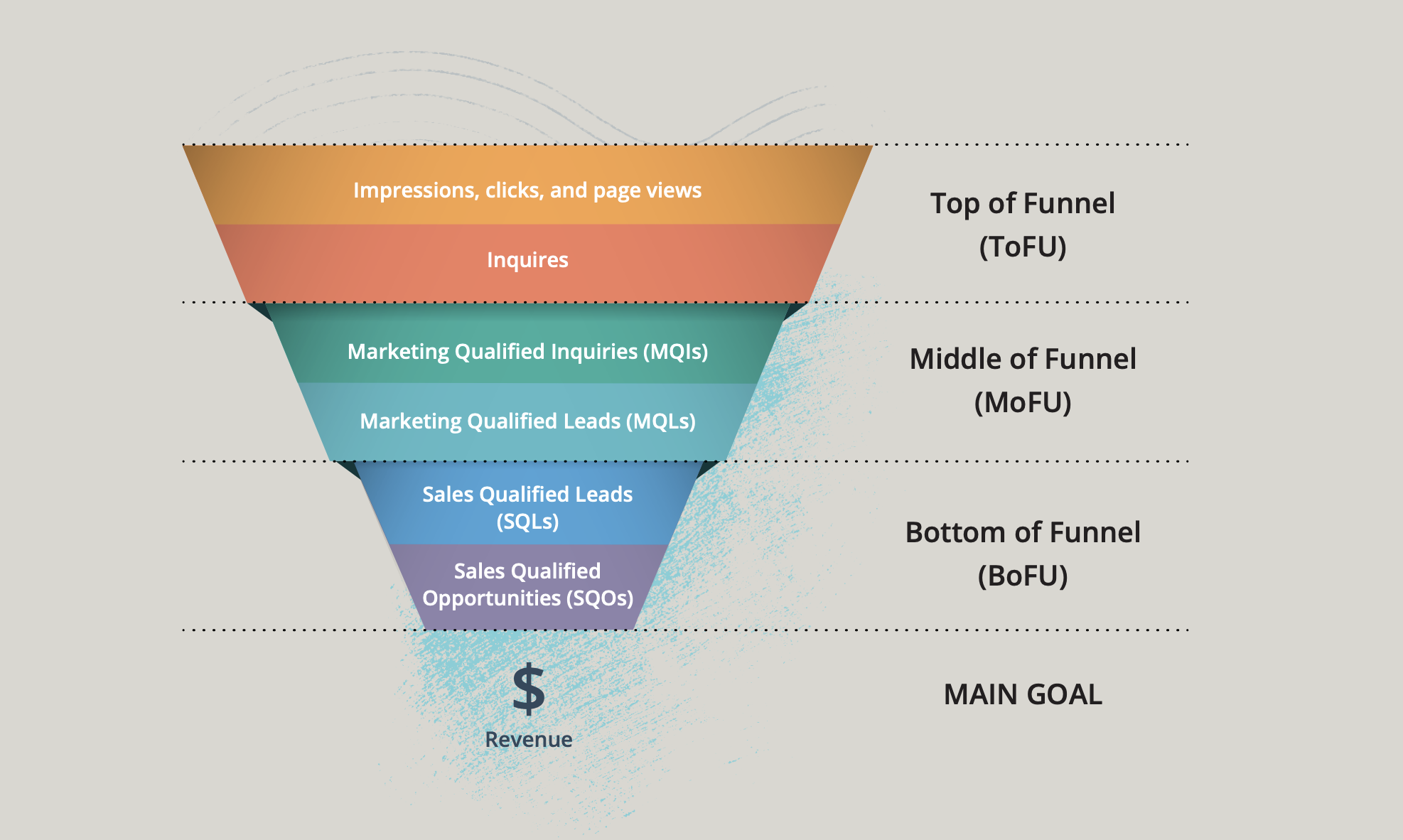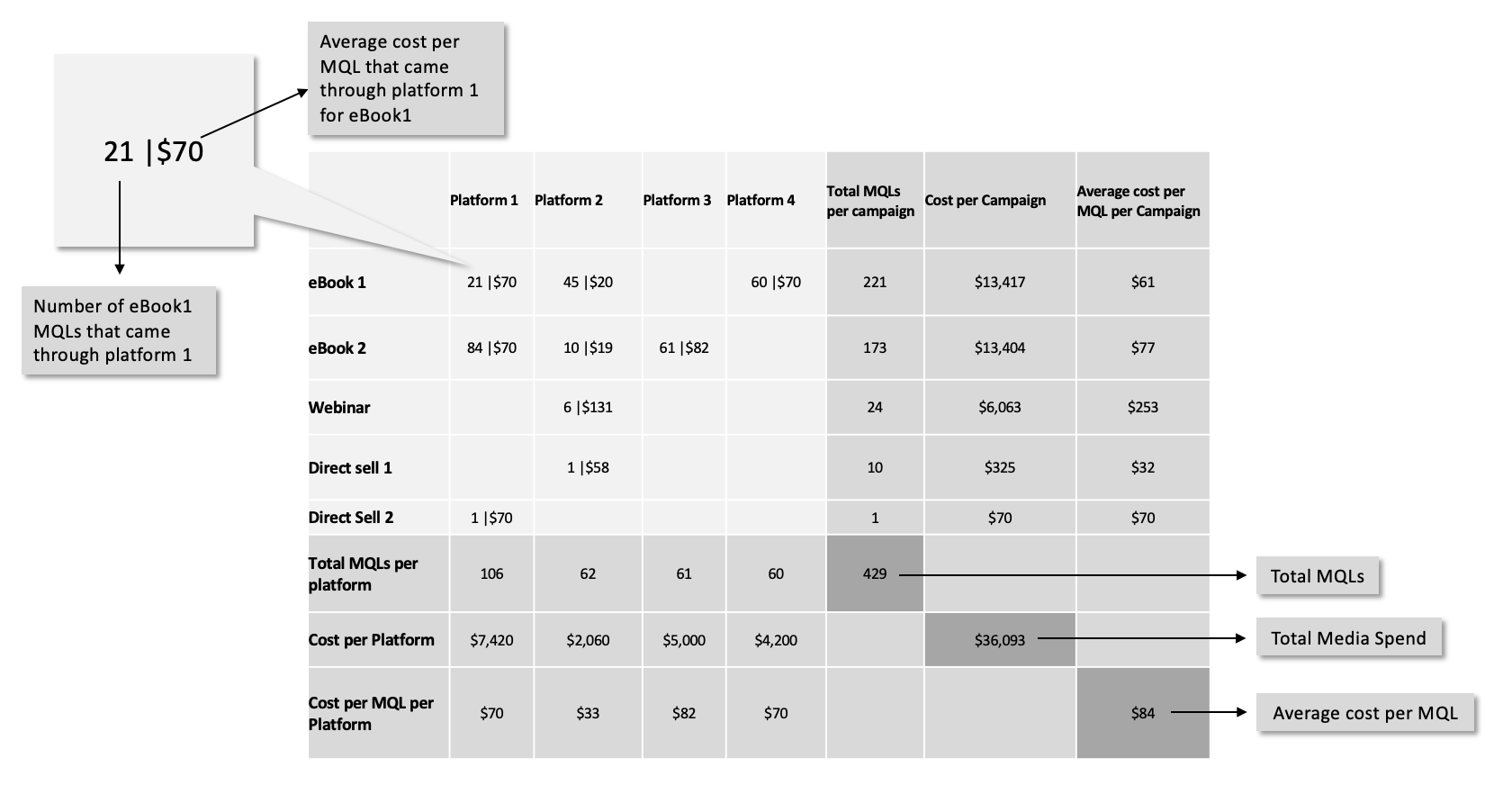B2B Campaign Design: B2B Digital Marketing Campaign Optimization
This post is the final part of our 3-part B2B campaign design series. Part 1 explains how to design landing pages, part 2 covers banner design, and here we explain how you can optimize campaigns based on your results.
In parts 1 and 2 of our series, we discussed what it takes to get a campaign up and running from a design point of view. But after the campaign launch is when the work really begins.
Digital lead generation is not a “set-it-and-forget-it” activity. While you want to give your campaign sufficient time to generate statistically significant metrics, after about two to four weeks (depending on the ad buy budgets), it’s time to start digital marketing campaign optimization!
Run your campaigns for two to four weeks before starting to optimize. But—make sure to keep an eye on them immediately after launch to ensure you don’t have any setup issues.
Want to learn more about B2B content marketing?
Download our comprehensive 20-page guide.
B2B Digital Marketing Optimization Process
Reporting Metrics for Digital Marketing Campaign Optimization
Before you even begin your B2B digital marketing optimization process, you want to make sure that you are tracking and reporting on the success of your campaigns based on the best metric you have. If you can’t go all the way to the bottom of the funnel yet, that’s okay. However, that type of tracking should be on your goal list for this year.
It may seem backward to start with reporting first, but you can’t optimize and compare without a starting point of campaign performance. As we mentioned, this initial reporting should be completed based on at least two to four weeks of campaign data.
At glassCanopy, our ultimate goal is always to track down to revenue. Yes, revenue, not just leads. This means tracking inbound inquiries all the way through the final sale. Your staff and investors want to be paid with money, not leads, so you should be optimizing marketing spend based on revenue generation—not clicks, page views, or inbound inquiries.
B2B marketing is highly nuanced and therefore requires a lot of in-depth analysis and reporting. Companies that don’t optimize based on revenue inevitably spend their money reaching the wrong people with the wrong message.
Creating a Digital Marketing Campaign Optimization Matrix
Once you have figured out how far in the funnel you can track, use that best metric to organize marketing spend in a way that makes sense. We like to break down spend in these terms:
| Campaigns | Platforms |
| An idea, asset, or call to action (CTA) | The method you use to reach your audience |
|
|
From here, we create a matrix to show the costs and results per campaign and platform:
Analyzing Campaign Performance
Now that you have a basis for how campaigns are currently reporting, it’s time to consider how they can be changed to perform better. Examining this data should give you an excellent starting point to ask yourself:
- Do I need to change the banners? This might be the case if overall campaign performance is lower than expected. For example, conversion metrics will be lower if people never click on your banners to get to the landing page in the first place.
- Do I need to improve the landing page? This might be the case if you have many clicks on the banners but few landing page conversions. You’re enticing people to click but not convincing them to convert when they get there.
- Do I need to modify the targeting? This is a little harder to pinpoint—but just as crucial as the others. You’ll have to review the leads coming in to determine if they are qualified and double-check that there is nothing out of alignment.
There are so many factors that influence the journey from banner view to landing page conversion—make sure you explore each element.
A Few B2B Digital Marketing Optimization Tools
It’s essential to use the tools at your disposal to gain more actionable insights about your campaigns. There are tons of online tools available, covering every marketing task you need to do. Here are just a few of our favorites:
| Platform | What it is | How to use it |
| Marketing Automation System | Any platform used to help automate your marketing activities. We kept it general here, but it could be a complete system like HubSpot or Pardot or an individual tool like Mailchimp. | Every marketing automation system offers reporting based on how you set up your campaigns. Starting from the leads that come in, you can review and qualify leads (essential for going deeper with metrics) and get performance metrics like page views, clicks, opens, etc. |
| Paid Platforms | Any platform you use to launch campaigns. Popular examples are Google Ads and LinkedIn Campaign Manager. | All paid platforms provide some campaign reporting metrics. What is available and how important it is for optimizing your campaigns will depend on your goals—but this is also the most straightforward way to see if you have any initial launch problems. (ex: spending $500 with 0 impressions would indicate an issue pretty quickly). In addition, analytics from paid platforms will help you identify how banners can be optimized. |
| Google Analytics | The leading web analytics service provides statistics and basic analytics tools to track and report website traffic about search engine optimization (SEO) and marketing. | Google Analytics can help you gather top-of-funnel metrics like page views, unique visitors, and time on page. While we don’t recommend focusing solely on these metrics, these are often stats that clients will ask about and can give you an overall view of how prospects are getting to your campaign landing pages. |
| Hotjar | A web analytics tool that uses mouse-tracking technology to create heatmaps, analyze online behavior, and create video recordings of web page interactions. | Hotjar lets you see exactly how people interact with your landing pages (and larger website, depending on your plan). The videos will reveal if your user experience is confusing and show how much of the page people are reading through. This can be used to help optimize landing pages. |
B2B Digital Marketing Optimization: Report, Analyze, Test, Repeat
Once you’ve analyzed all of the necessary data, then it’s time to make a game plan. What this process looks like will depend on your team, goals, and resources—but it’s essential to keep testing and regularly optimizing for things like:
- Messaging
- Colors
- Targeting parameters
- Lead quality
Market factors are constantly changing, so a campaign developed six months ago may no longer perform at the same level. No matter what you’re doing, repeat the process over and over—report, analyze, test, repeat regularly. As you continue to optimize, you’ll be able to figure out which elements of different campaigns work best, and then you can leverage those in new ways. Of course, you should always experiment, but having a reliable lead generation formula will ensure a regular flow of good leads.
Want to learn all the details about B2B content marketing? Sign up to receive our upcoming eBook.
Sound like a lot of moving parts?
It is—but we can handle it for you. glassCanopy is a B2B marketing agency specializing in marketing IT infrastructure, enterprise software, and cybersecurity, as well as non-pharma marketing to doctors and hospitals. We provide start-to-finish content and lead generation, including ongoing campaign optimization services, including:
- Strategy development
- Content development (eBooks, white papers, and more)
- Content and direct sell campaign creation
- Landing page and banner ad creation
- Ad buy planning and placement
- Lead nurture to bring existing leads to sales-ready status
- Reporting, analysis, and optimization
If you’re interested in learning more about our services, set up a 20-minute call.
- Medical Marketing SEO: Using SEO to Target Doctors and Healthcare Professionals (+ Checklist) - December 4, 2023
- Marketing to Dentists: How to Market to Dentists - August 8, 2023
- HCP Marketing Trends 2023: 23 HCP Marketing Stats for 2023 - November 30, 2022





